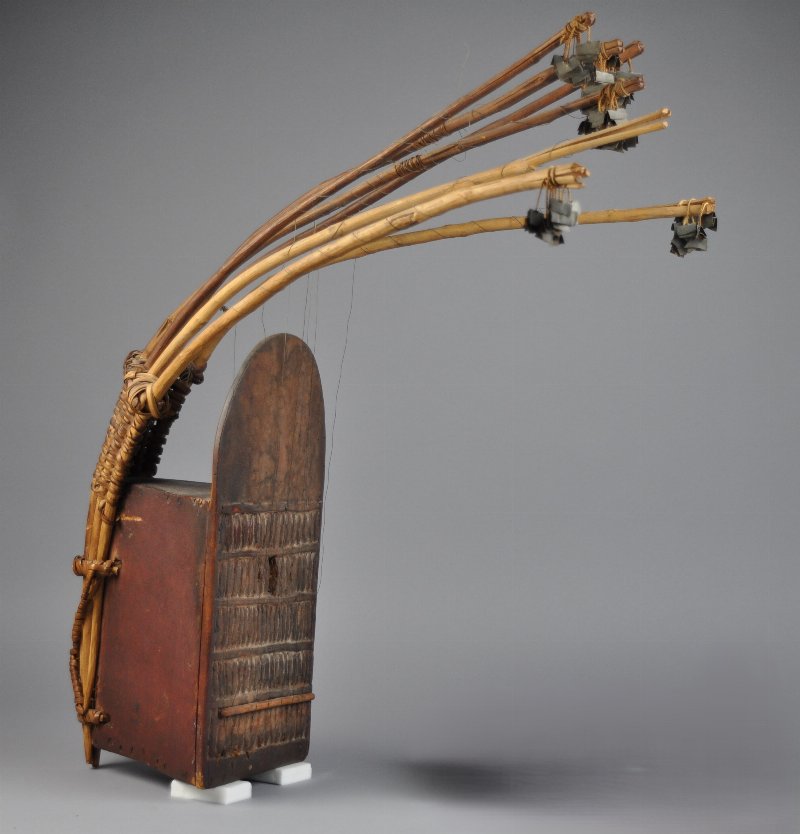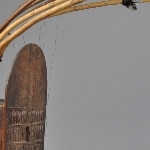Musical Instrument
2024-5-2
From: Nigeria | Benin
Curatorial Section: African
| Object Number | 2024-5-2 |
| Current Location | Collections Storage |
| Culture | Edo (Africa) |
| Provenience | Nigeria | Benin |
| Creator | Aimiyekagbon Ogbebor |
| Date Made | 20th Century CE |
| Section | African |
| Materials | Wood | Metal |
| Iconography | Akpata |
| Description | The akpata is a seven-stringed instrument that, like the asologun thumb piano, is believed to appeal to the witches and spirits, as well as to groups of human listeners. Professional musicians employ it to accompany epics that last for hours, inviting their entourages to join in on supportive choruses. Each string, made of wire or palm fiber, is attached to a rod that ends in a cluster of seed or metal rattles. Though made from the same type of shrub, the rods each originate from different bushes, a choice believed to vary the sound of the attached strings. The akpata's role may be purely entertainment-oriented today, but its appearance on early plaques demonstrates it once had a ceremonial palace role as well. In fact, on at least two plaques it accompanies high-ranking warrior chiefs performing at the Isoikuo war festival. It remains part of royal training; the late Oba Akenzua II learned how to play, as have several chiefs. This particular akpata includes decorative surface patterning, and developed a patina through extensive use. It was a gift to Dan Ben-Amos from the Benin City bard Aimiyekagbon Ogbebor, the result of a friendship that grew from research into Edo Folklore. |
| Height | 61 cm |
| Width | 36 cm |
| Depth | 53 cm |
| Credit Line | Gift of Dan and Batsheva Ben-Amos, 2024 |
| Other Number | L-2008-15-2 - Old Loan Number |
Report problems and issues to digitalmedia@pennmuseum.org.



